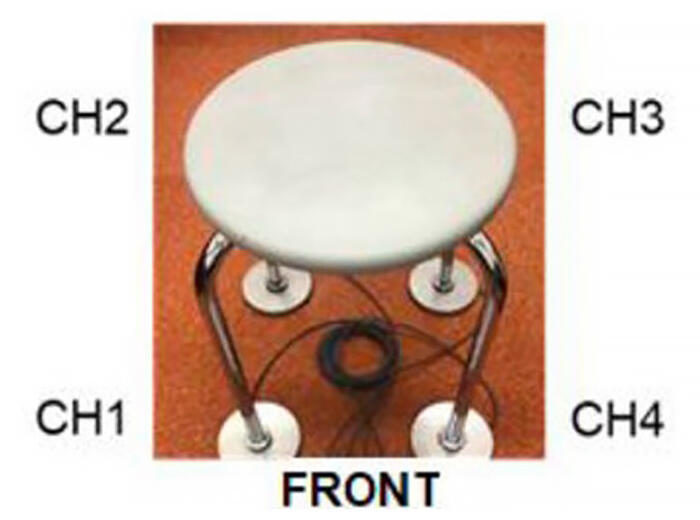A research group led by Professor Yasue Mitsukura of the Faculty of Science and Technology, Keio University, and Project Lecturer Brian Sumali of the Keio University Global Research Institute, announced that they have successfully detected an accurate heartbeat and arrhythmia simply through sitting down in a chair with a weight sensor mounted under its legs. The group developed an algorithm to detect arrhythmia by predicting the electrocardiogram (ECG signal) from the BCG signal (ballistocardiogram) obtained by the sensor. Experiments confirmed that they could detect arrhythmia though simply sitting on the chair for 10 minutes. The results are expected to be useful in predicting things such as acute myocardial infarctions that occur at home. The group's finding was published in the July 29 issue of PLOS ONE.

Provided by Keio University
Heart disease is the second most common cause of death in Japan after cancer, and statistics from the Ministry of Health, Labour and Welfare show that, outside of hospitals, neovascular events leading to death occur more frequently at home. However, electrocardiographs used for ECG measurements in medical examinations are highly reliable but expensive, and their operation is a medical procedure, making them unsuitable for daily use in the home.
In response to these issues, the group developed a load sensor that can be placed under a chair for easy use at home, and developed an algorithm to infer the ECG signal from the BCG signal obtained from the sensor. They tested whether the ECG, heart rate, and arrhythmia could be detected.
The group conducted an experiment on 14 healthy subjects and patients with cardiac disease (arrhythmia). Subjects sat on a chair equipped with a sensor and BCG signals were measured (10 minutes at rest with eyes open) while ECG signals were also recorded with an electrocardiograph.
The results confirmed that the R wave peak could be predicted with more than 95% accuracy in healthy subjects. Next, they were able to confirm that arrhythmia could be accurately detected in patients with cardiac disease.
The fabricated sensor has four detectors, each of which is placed under a chair leg to acquire BCG signals. In the experiment, one sensor was placed under each of the four round legs of a metal, four-legged chair, but the signal could be acquired regardless of the type or material of the chair. Signals can be acquired even on sofas and beds, so they can be used for a variety of purposes. Since arrhythmia can be detected by simply sitting down, it is anticipated to be available for patients who have difficulty with regular electrocardiographs.
"Our goal is to make every object in the house a sensor for whatever we do," says Professor Mitsukura. "There are many different types of heart disease, and the system has the potential to detect neovascular events that could lead to death from these diseases. Moving forward, I would like to acquire data on various cardiac diseases and provide proof of concept."
This article has been translated by JST with permission from The Science News Ltd.(https://sci-news.co.jp/). Unauthorized reproduction of the article and photographs is prohibited.




